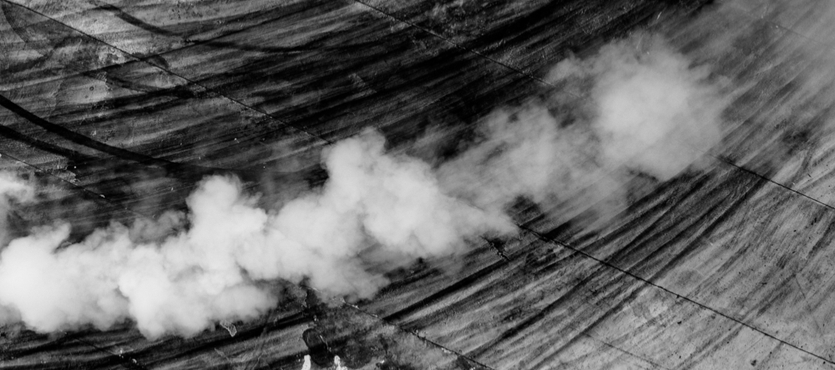What can sick contractors from Iraq learn about the fight for injury compensation from Navy veterans in Vietnam?
Blue Water Navy Veterans is a group of Navy veterans who served on offshore ships during the Vietnam War era. Veterans Affairs Secretary Robert Wilkie says there is insufficient evidence linking the toxic defoliant Agent Orange with the claimant’s serious illnesses. To resolve the impasse, a compromise bill is currently working its way through Congress. Veterans’ Affairs Committee Chairman Sen. Johnny Isakson (R-GA) recently said that the committee would work to find a solution. However, “we’re not going to get bulldozed into a corner, and we’re not going to bulldoze someone into a corner,” he vowed.
There is a similar lack of overwhelming data with regard to burn pit claims. So, Iraq and Afghanistan Veterans of America Legislative Director Tom Porter said his group was keeping a close eye on the Blue Water Veterans/Agent Orange conundrum. “We’re going to be facing the same challenges as the Blue Water Navy Veterans from Vietnam if we don’t solve their problem,” he predicted.
Agent Orange and Deployment-Related Health Conditions
Director James Cameron said he based 1986’s Aliens on his assessment of the Vietnam War. The colonial marines on LV-426 had a vast array of high-tech weapons. Yet they were ineffective against an unseen enemy which relied on sudden abushes. Vietnam was the same way, he surmised. The Americans had vastly superior weapons yet were unable to subdue the hidden Viet Cong. His analogy may or may not be correct, but he is certainly entitled to his opinion.
Mr. Cameron is certainly correct about America’s high-tech weapons. Sometimes, even the Americans did not understand the full force and effect of these weapons. Agent Orange is a good example. From 1961 to 1971, American aircraft sprayed millions of gallons of this herbicide onto the jungles of Vietnam. Military planners hoped to defoliate the landscape and deprive the communists of cover.
According to the Red Cross, about a million Vietnamese suffer ill health effects related to 2,4,5-T and 2,4-D exposure. These herbicides contained dioxin, which is one of the most dangerous chemicals known to man. Dioxin subtly alters DNA. So, offspring often suffer from birth defects. Direct exposure can cause various forms of cancer.
In America, the first lawsuits against Agent Orange manufacturers Monsanto, Dow Chemical, and Diamond Shamrock appeared around 1980. The chemical companies denied responsibility but agreed to an eleventh-hour settlement.
The government was even slower to act. Congress did not pass the AGent Orange Act until 1991. Even then, coverage was limited. In 2011, a 20-year Air Force study concluded that there was no evidence of a connection between serious health problems and “elevated levels of exposure to Agent Orange.”
For several years thereafter, the Veterans Administration consistently denied Agent Orange claims unless the claimant was a “boots on the ground” victim. In 2015, the Secretary expanded coverage to maintenance staff, post-Vietnam C-123 aircrews, and aeromedical evacuation crews. The aforementioned Navy veterans are now fighting to expand this rule even further.
Burn Pits and DHCs
The relationship between burn pit exposure and DHCs is similar. However, since burn pits are a phenomenon of the post-9/11 War on Terror, this story is still being told.
When the U.S. invaded Afghanistan and Iraq, commanders authorized burn pits as a way to dispose of trash. Basically, soldiers and/or contractors dig a large open-air pit, fill it with any kind of trash at the base, and set it on fire. That trash could include human waste, Styrofoam cups, used tires, metal parts, and other items which release toxic fumes.
Generally, KBR contractors did most of the burn pit digging, operation, and maintenance work. That is especially true at the sprawling Joint Base Balad in Iraq.
There is considerable evidence, from both inside and outside the military, that toxic burn pit fumes caused a wide range of DHCs. Some of these lung conditions were very serious illnesses that almost never occur in young, healthy people. Beau Biden, the former Vice-President’s son, developed brain cancer shortly after a JAG deployment to the Middle East. Speculation abounds that burn pit smoke caused his cancer.
Much like the VA did with Agent Orange a generation earlier, the government now denies that there is a connection between burn pits and DHCs. Instead, bureaucrats and scientists say that these diseases are either one-off random occurrences or related to dust and the desert climate.
A February 2018 decision from an Administrative Law Judge at the Department of Labor dealt a serious blow to that argument. The ALJ ruled that burn pits, not climate, caused the claimant’s lung disease.
Injury Compensation Available
Most DRLD (deployment-related lung disease) victims are unable to work for long periods of time. They may even be permanently disabled. So, the Defense Base Act pays generous lost wages benefits.
DBA medical benefits are also available. Serious disease like cancer and constrictive bronchiolitis are much more treatable today than they were in the 1990s. But progress has not been cheap. Medical treatment bills often exceed $10,000 a month in some cases. So, the DBA pays for all reasonable medical expenses, including:
- Emergency hospitalization,
- Follow up medical care,
- Physical rehabilitation,
- Prescription drugs, and
- Medical devices.
DBA insurance companies often try to use the “reasonable” medical bills loophole to reduce or deny compensation. That is especially true with regard to serious illnesses that have innovative yet effective treatments. Insurance company lawyers often argue that innovative treatments are not medically necessary. But the proof is in the pudding, as the old saying goes. If the treatment was effective, it was arguably reasonable as well.
Contact Barnett, Lerner, Karsen & Frankel, P.A. for more information about DBA lost wages benefits.

